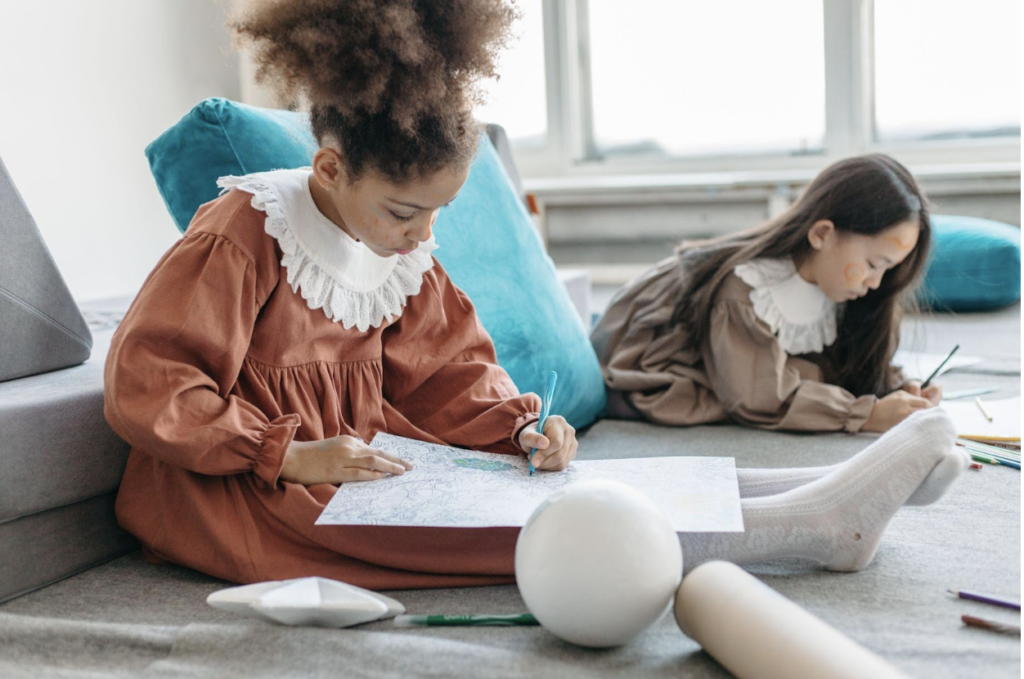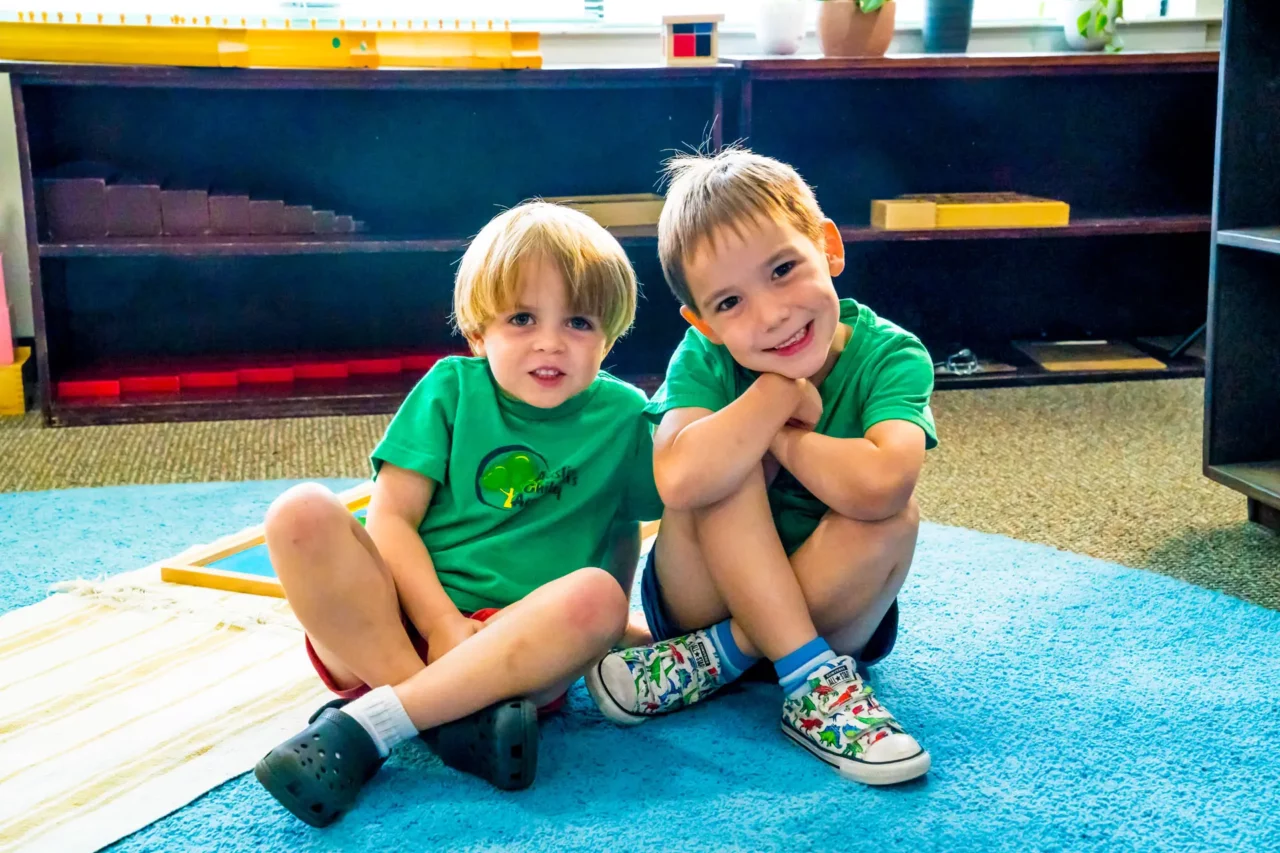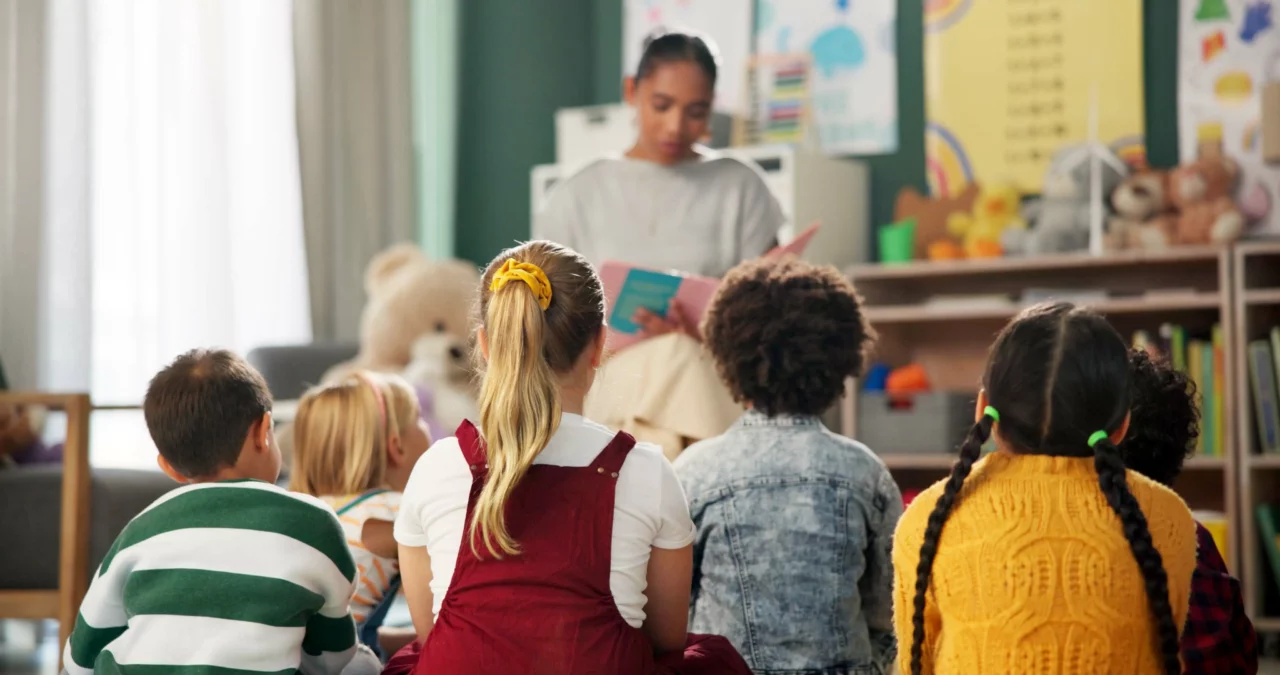
Montessori philosophy greatly emphasizes independence in a child, and we do all we can to foster that independence in the environment we create.
In this article, you’ll find five ways that we develop child independence at Austin Children’s Academy.
Our Classrooms are Designed for Children
Everything in a child’s classroom is created with them in mind. That means child-sized tables, chairs, supplies, and activities. With child-sized tools, a child is capable of doing things on their own that they might not be able to complete with something created for an adult.
We also operate with the knowledge that children do not thrive in a cluttered area. To encourage them to choose a desired activity, we set up shelves that are filled with toys, crafts, and experiments—and we don’t overfill them. This presents a child with the opportunity to choose what they want to do, know that they are capable of it, then put it away in the clear spot where it belongs.
We Ask Questions
Independence and freedom go hand in hand. Instead of ordering children around, we ask questions and let them lead the way toward what they want to do or how they should respond.
Presenting choices is the key. A child feels as if they are in control when they are presented with a reasonable number of choices (two or three) they can decide between. This way they aren’t overwhelmed with possibilities, but they’re still forging a path for themselves and choosing what they want—not what you want.
We Observe
Our Montessori teachers are trained to observe before taking any action. We pay attention to our students and look for patterns in their behavior that let us know what they’re ready for and what they’re itching to try. We listen to their language and watch for signs that they are ready to move on to the next step in the lesson or to a new lesson entirely.
In a Montessori classroom, you will often see a teacher standing off to the side and quietly watching, taking notes, and paying attention to their students. Unless someone is in danger, it’s not often that they will step in and take control of a situation.
We’re Intentional
Nothing in a Montessori classroom has been put there by accident. Each shelf, tray, craft, and activity is selected with purpose and intention—and that intention has something to do with leading a child toward independent learning and creating space for independent work.
As we stated earlier, the shelves are set up close to the ground so they’re in reach of a child—the child won’t have to ask a teacher to get something down from a place they can’t reach. Instead, they can decide what to grab and get it themselves, completing the entire process on their own—which fosters independence and confidence.
On the shelves, materials are placed in sequential order. A child will be able to tell what lesson is next in the order because it will be in the next slot on the shelf, from left to right and top to bottom. In our classrooms, there is no guesswork.
We Make Things Digestible
Instead of teaching one overarching lesson that may go over children’s heads, as everyone learns at different paces, we break the lessons down into digestible sections. Since we focus on sequential learning, this philosophy goes hand in hand with what Montessori already emphasizes.
We teach the first step, the students master it, and then we teach the second—and the pattern goes on and on until the entire concept is mastered. This technique can be put into action with anything from math to reading and many subjects in between.
Independent Life in the Classroom
Our guides at Austin Children’s Academy understand that it takes patience to balance the needs of each child, and that’s a virtue that we have in droves—after all, it is a major component of the Montessori method.
To learn more about our philosophy, our classrooms, and our school in general, get in touch and schedule a tour with us today!
such services.
Is Montessori Right for My Child?
With communication and the act of incorporating the Montessori method at home, Montessori education is possible for children with learning disabilities and other delays. If you’re curious about how your child could fit into our program, get in touch with us at Austin Children’s Academy today.





